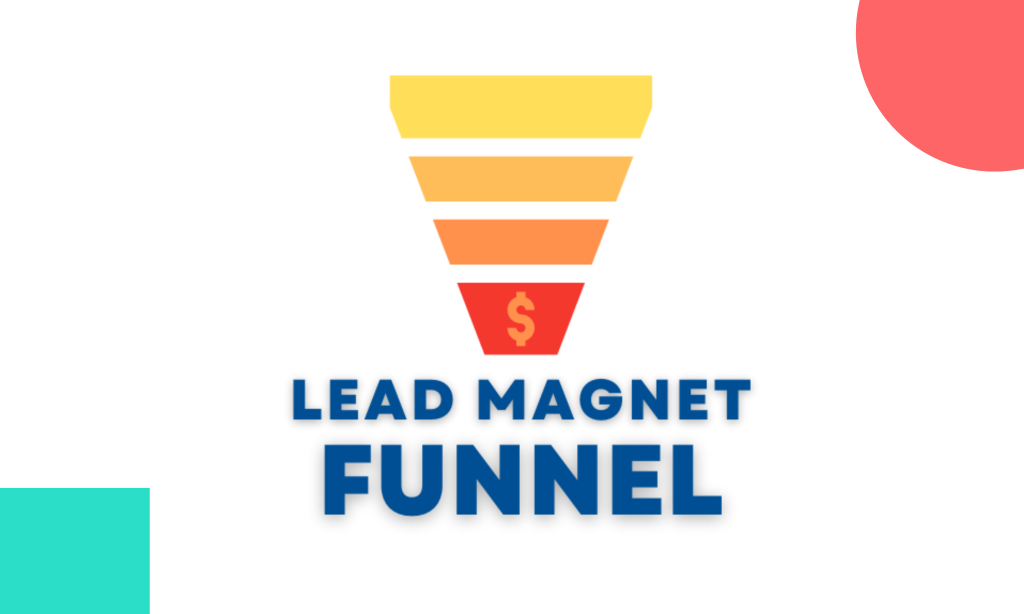It’s 2020, and after updating your marketing plan, you’ve decided to explore the idea of conversational marketing, and potentially make this part of your marketing strategy.
In this blog post, we answer all that, and more. Read on to find out more!
What is Conversational Marketing?
In a nutshell, conversational marketing refers to the act of marketing your product/service to a potential customer by conducting a conversation. The key to conversational marketing lies in personalizing your communications, and humanizing your approach.
Quizzes
Quizzes are one of our favorite conversational tools, simply because they’re so versatile. Regardless of which segment you’re trying to target (and how far along they are in their customer journey), you can do so using a well-thought out quiz.
For instance, say you’re focusing on the top of your marketing and sales funnel. You want to increase the conversion rate of your website, in order to generate more leads.
To do this, you can create a quiz on your website to engage your users. If you own a book subscription business, for example, you might choose to create a quiz telling participants what type of reader they are:
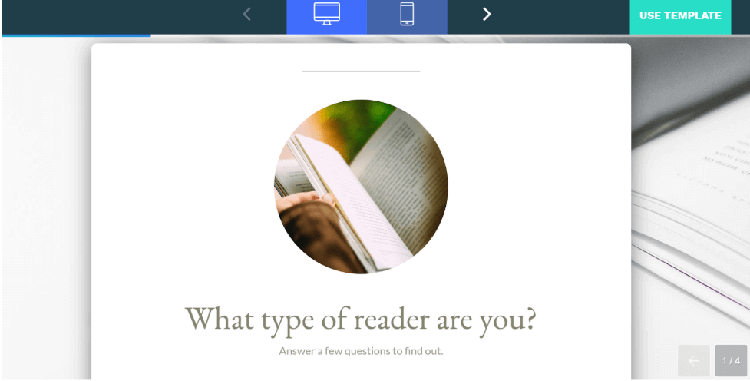
Now, what if you want to engage your existing users, and bump up your Customer Lifetime Value (CLV)? If you’re running a fashion eCommerce store, you can create a quiz that helps participants identify their fashion identity (and recommends them certain items from your store), and send it to all your newsletter subscribers:

It’s not difficult to put together beautifully-designed, professional looking quizzes… even if you have no coding skills. Just use a tool like involve.me, which comes with 300+ templates and allows you to build quizzes in a matter of minutes.
Calculators
Like quizzes, calculators are a fun and versatile element that you can use to achieve a wide range of marketing objectives.
If you want to use a calculator to improve your lead generation efforts, you can definitely do that. Calculators also help to engage your existing users, by getting them to interact with your brand.
Last but not least, some calculator tools allow you to create enriched user profiles and categorize them into different segments based on what they input into your calculator. How’s that for killing two birds with one stone?
Here are a few ways in which you can use calculators…
If you’re selling some sort of diet/fitness related product, such as a meal plan, a fitness app, or exercise gear, add a calculator to your website to allow your users to calculate their BMI:
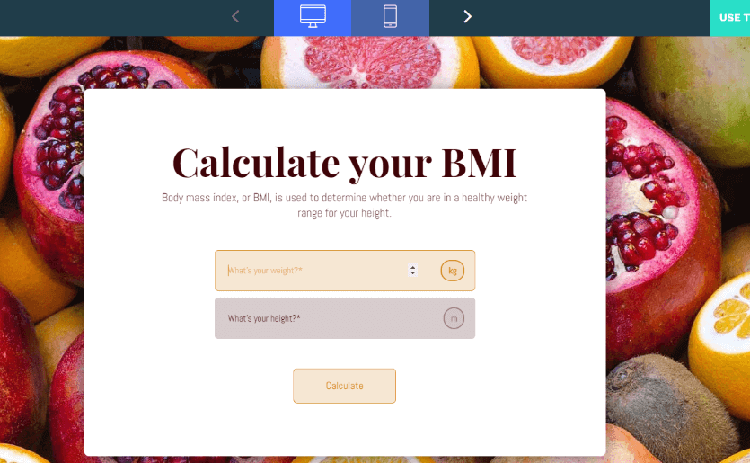
If you’re running an ad agency and you want to convince your clients that it’s worth increasing their budgets on digital ads, use a calculator to show them their potential Return On Ad Spend. You can direct your clients to your website to check out the calculator, or even have your sales reps use the calculator during meetings to strengthen their pitch:
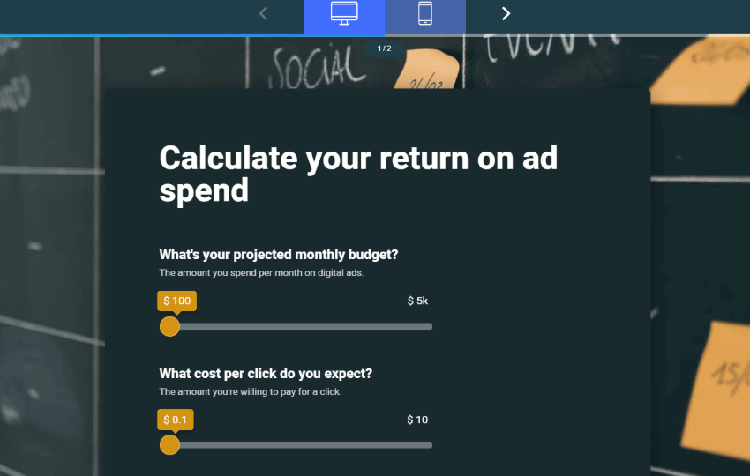
Surveys
Many companies use surveys to figure out how customers perceive their brand, to measure customer satisfaction, to get feedback about how they can improve… the list goes on.
But not all surveys are made equal. On one end of the spectrum, you have the overly-corporate, robotic sounding surveys, which get maybe 1 completion for every 1,000 people who click on the survey. And on the other end, you have beautifully-designed, compelling surveys which are a lot more user-friendly and accessible.
Obviously, your goal is to build a survey that falls into the second camp, not the first. To do this, you can play around with the different elements of your survey (background image, color scheme, messaging...) to make sure that the overall look and feel of your survey excites your customers, instead of putting them off. Always prioritize user experience above anything else.
For instance, instead of using a boring 1-5 scale, consider having your customers rate your product/service using hearts or other fun icons instead:
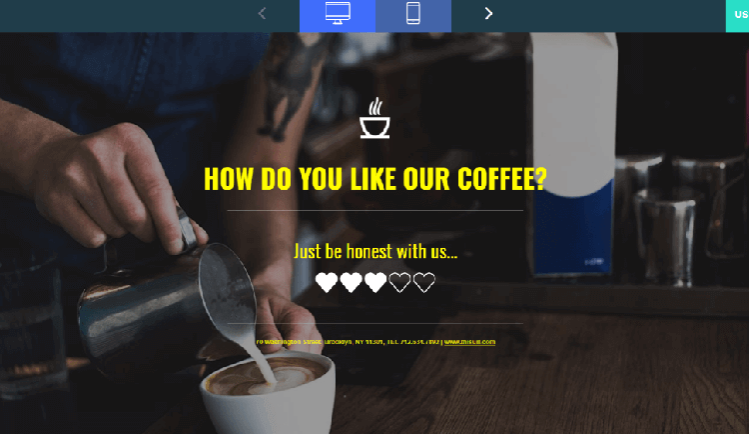
Alternatively, use an interesting and dynamic background image on your survey, and add social icons to encourage your customer to follow your social media channels:
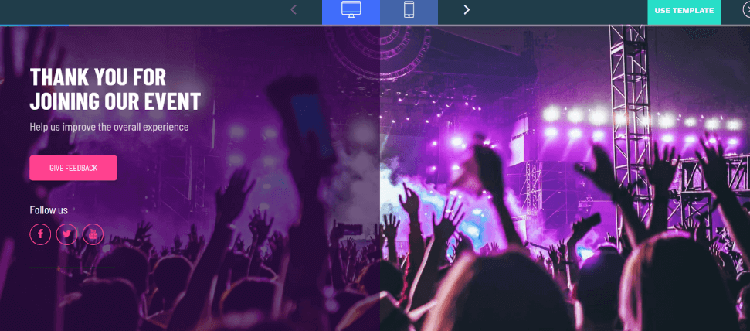
Conversational Marketing Beyond Everything
Adding a quiz or calculator to your website, or creating a survey is a quick and easy “win” when it comes to conversational marketing. But apart from tapping on these interactive elements, we also recommend that you improve your conversational marketing efforts by auditing your tone/messaging across all your communications, and give this an overhaul if necessary.
The most obvious place to start off is your website. Get a few people who aren’t familiar with your business or brand to look at your website, and ask them to share their first impressions.
Many business owners or marketers might not be able to look at their website objectively, but if you ask an outsider for their feedback, you might come away with interesting insights (for example, someone might tell you that you’re using jargon/technical language on your website that’s putting them off).
From there, move on to your email campaigns. Pretty much every company uses marketing automation tools so that they can trigger their automated email campaigns (instead of manually sending emails)... but you’ll still want to utilize a conversational tone, so that your subscribers feel like you’re speaking to them personally. Again, try and get an outside perspective if possible, and edit all your email clarity for clarity and brevity.
Once you’ve finished auditing your email campaigns, do the same with all your other assets or communication materials, including press releases, brochures, and even what you share on your social media channels.
Utilizing a Conversational Tone
If you’ve been trained to write in a “corporate” manner, it can be tough to fight against your instincts and adopt a more casual, conversational tone. Here are some examples to help with inspiration:
Example 1
Corporate: We would like to extend a personal referral code for you to share with your network: AABB. Please recommend us to your colleagues and business partners in order to get 5% off your next bill.
Conversational: Here’s your very own referral code that you can share with your colleagues: AABB. If they sign up through this code, we’ll give you 5% off your next bill!
Example 2
Corporate: {ProductName} integrates perfectly with all leading CRM systems, and you can use {ProductName} in tandem with your existing toolkit.
Conversational: {ProductName} works with all the popular CRM systems, so you don’t need to sync your data back and forth.
Example 3
Corporate: {ProductName} is a cutting-edge, best-in-class product that allows you to provide your customers with an omnichannel, 360-degree marketing experience.
Conversational: With {ProductName}, you can reach out to your customers on different platforms including web, app, social channels, and more.
Bio:
Will is the founder and CEO of UpLead.com, a B2B sales intelligence platform that helps companies identify their best-fit customers and reach out to them. UpLead is used and trusted by companies from across the globe, including Salesforce, Google, and Dropbox.





